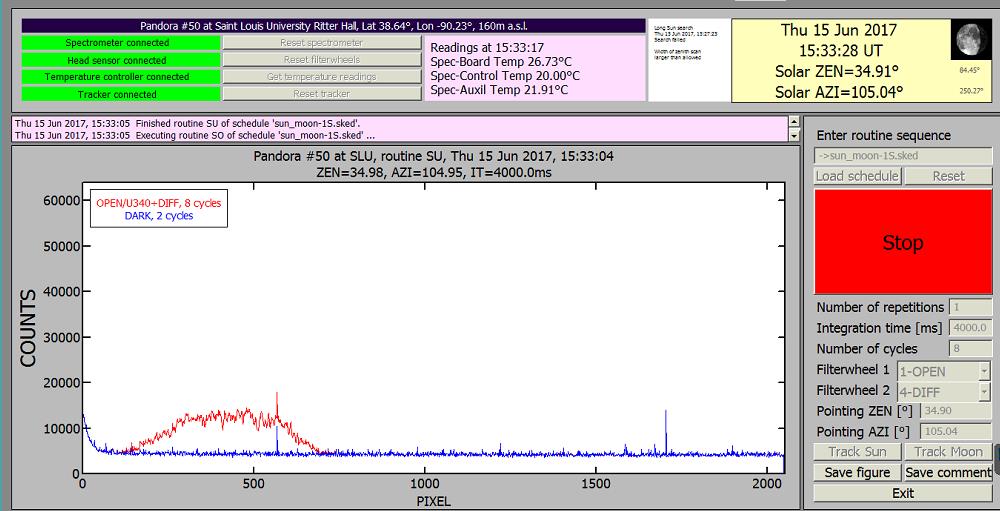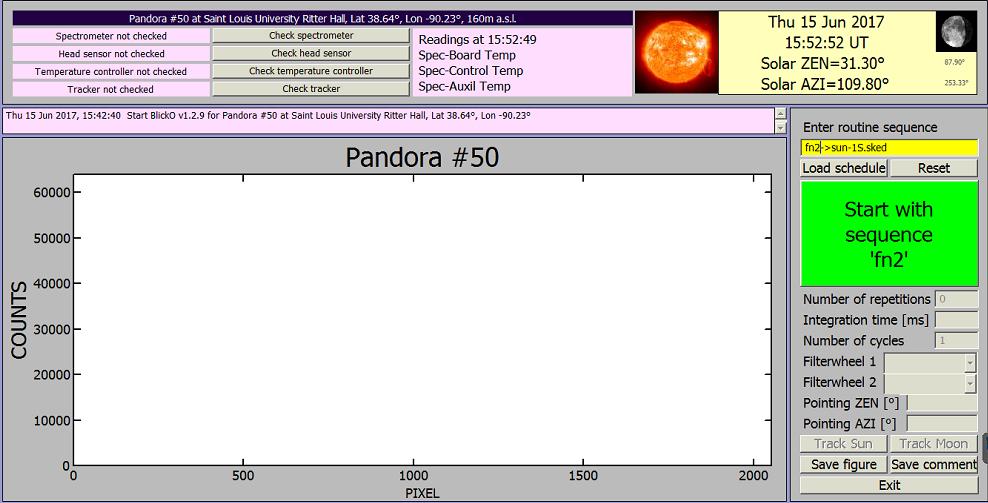Pandora Operation
Pandora operates autonomously running a program on a small computer inside a weather resistant container. In addition to the computer, the container has the small fiber optic connected spectrometer, a thermoelectric heater/cooler for temperature control of the spectrometer, and a small electronics package that assists in the operation of the entire system along with a circuit board in the optical head. The computer is accessible over the internet, which allows the user to remotely monitor the Pandora activity and to change its mode of operation. The included software that we developed contains the graphical user interface and all software needed to track the sun or moon, and to move to any position in the sky. The image shows a typical solar spectrum from 300 to 525 nm (red line) with the solar calcium H and K lines clearly visible. The dark current is also shown (blue line).
Figure 1 A Pandora Computer Screen Image
Control Spectrometer, Head Sensor, Temperature, and Tracker. Specify routine and monitor solar zentith and azimuth angles.
To start the Pandora click on the BLICKO icon Next select the operation file
corresponding to your Pandora number
In this case, 50. ------------------------------------->
select OPEN
The result will be as shown in Figure 2 below. Click on the boxes
Reset Spectrometer
Reset Filterwheels
Get Temperature Readings
Reset Tracker (The tracker will take abou 1.5 minutes)
If successful, all the boxes on the left will turn Green.
Next (on the right side) Click Load Schedule. The most common choice is Sun_1S
Figure 2 A Pandora Initial Computer Screen Image
If the sun is shining: Type fn2 in front of the arrow. Next click the Green box. Pandora will now find the sun and start operations.
The calculated Solar Zenith and Azimuth angles are shown in the yellow box
The instrument Pointing Zenith and Azimuth angles are shown below. The calculated and pointing angles should closely match.
Exposure times will range from 4 ms (bright sun) to 4000 ms for cloudy conditions





